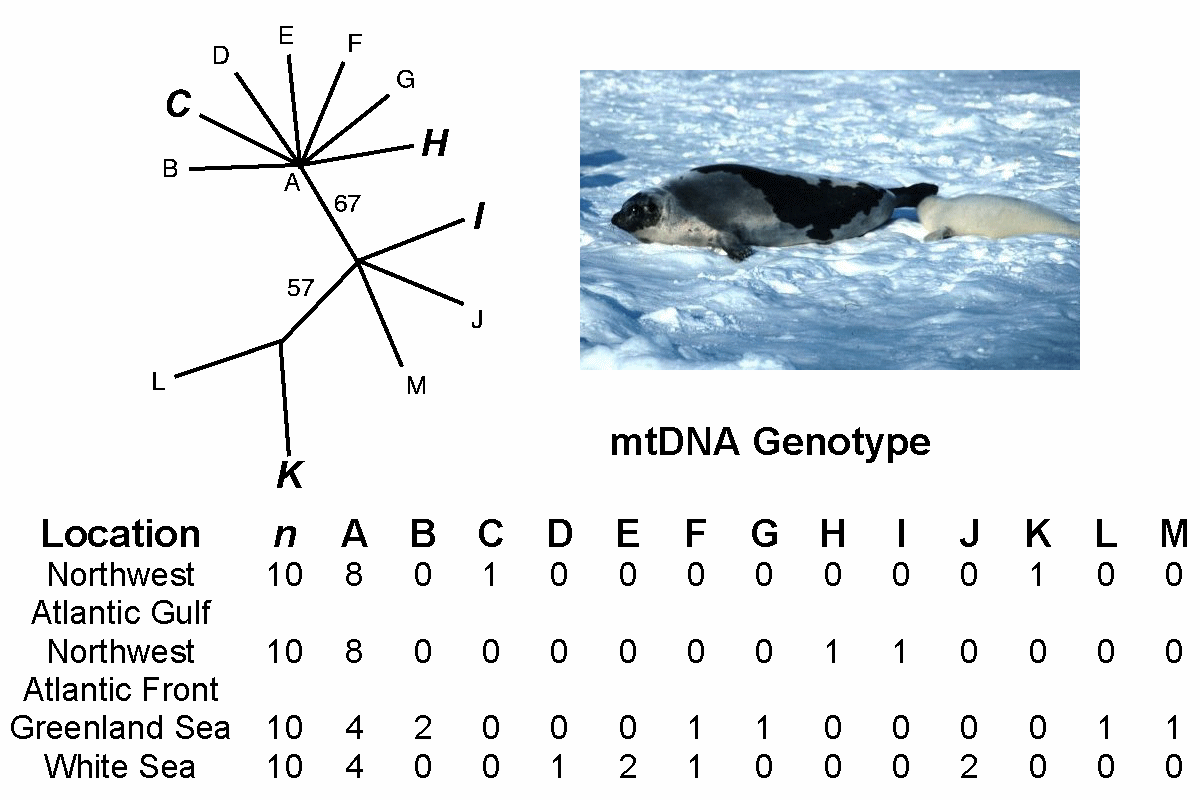

Single-Locus Phylogeographic analysis
of Harp Seals (Pagophilus groenlandicus)
(Perry et al. 2000 Marine Biology 137,53-58)
Harp seals (Pagophilus groenlandicus) are the most abundant pinnipeds of the North Atlantic.Three separate breeding populations have been recognized based on the geographic locations of whelping areas: one on pack ice in the Greenland Sea near Jan Mayen Island, a second on ice in the White Sea and the Gorlo connecting it to the Barents Sea, and a third in the Northwest Atlantic on pack ice along the east coast of Canada. The latter has been separated into two sub-populations, one whelping in the Gulf of St. Lawrence (“Gulf”) and the other off the coast of northeast Newfoundland and/or southern Labrador (“Front”). Typically, seals form one, two, or three concentrations in each area, but because of current- and wind-driven ice movements, these groups can split, mix and reform over the course of the whelping period.